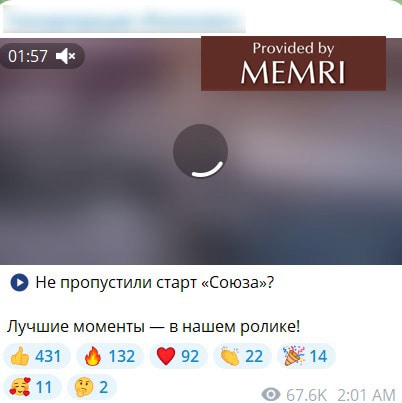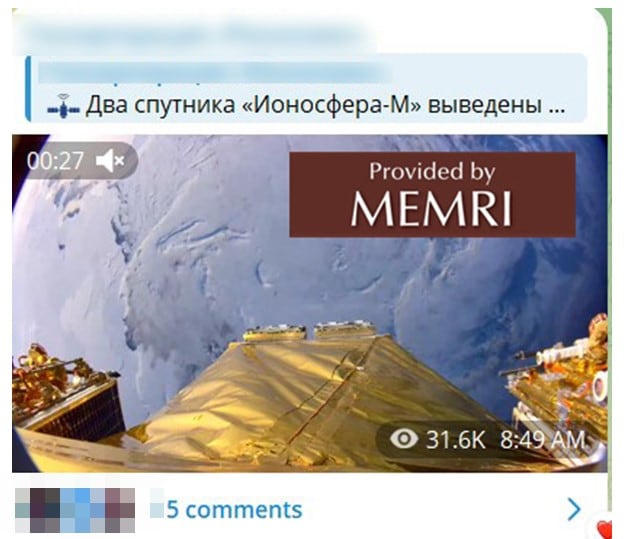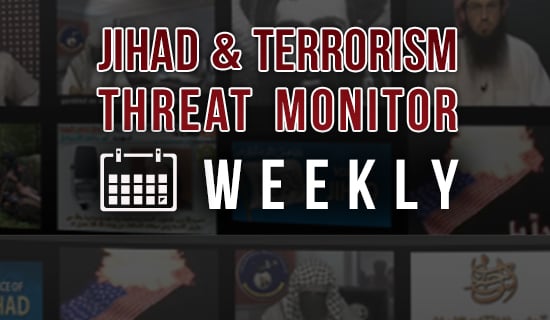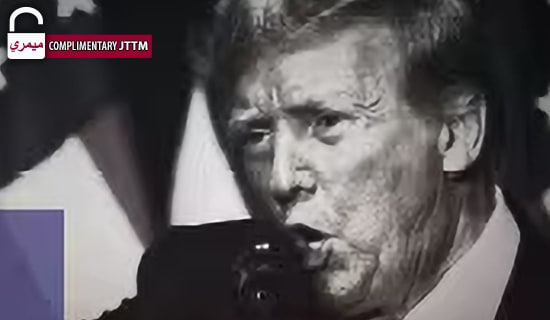As Russia continues to distance itself from the West, its cooperation with "rogue states" increases, including in science and technology. As anti-Western sentiments increase, concerns about the militarization of space grow. The Kremlin appears to be generously sharing its technologies, particularly with Iran and China, as Western anxiety grows from such "partnerships."
On November 5, "Fregat," the upper stage of the Russian "Soyuz-2.1b" rocket, launched a record number of 53 satellites into low orbit around Earth from Russian spaceport, Vostochny Cosmodrome (Amur Oblast), in Russia's far east.[1] The rocket's payload consisted of 49 small satellites: 47 Russian, a Russo-Chinese "Friendship ATURK," a Russo-Zimbabwean "ZimSat-2," two small Iranian satellites, "Hodhod" and "Kowsar," as well as two Russian helio-geophysical satellites, called "Ionosfera-M." The latter two satellites are part of "Ionosonde-2025" project aimed at researching the ionosphere and upper layers of the Earth's atmosphere and near-Earth space.[2] The small spacecrafts (developed mainly by student research teams) were launched into orbit under the "Universat" program and the "Space-Pi" project.

A post on the official Telegram channel of the Russian State Corporation for Space Activities, "Roscosmos," shows the start of the "Soyuz-2.1b" rocket from the Vostochny Cosmodrome. (Source: State Corporation, Roscosmos).[3]
The Russo-Chinese small satellite "Friendship ATURK" ("Association of Technical Universities of Russia and China") was jointly developed by university teams at the Harbin Institute of Technology in China and Russia's Amur State University. The spacecraft is equipped with a high-resolution camera (which has two separate data feeds for the Russian and Chinese research teams. It also carries a "Photon-Amur" device to help study new photoelectric converters.[4]

A post on the official Telegram channel of the Russian State Corporation for Space Activities, "Roscosmos," shows the separation of two "Ionosfera-M" helio-geophysical spacecrafts from the "Fregat" upper stage. (Source: State Corporation, Roscosmos)
The two Iranian satellites are "Hodhod" (3U CubeSat), and "Kowsar" (24U CubeSat). The first, Hodhod, is designed to research satellite communications and Internet networks. The second, Kowsar, is aimed at surveying land. A cadaster, which might be used for urban planning, vegetation management, and oil exploration, was also launched into orbit.
The two spacecrafts were designed by the Iranian SpaceOMID company.[5] The Islamic Republic News Agency (IRNA), commenting on the event, argued that the launch reflected increasing space cooperation between Moscow and Tehran.[6] In 2022, the Iranian "Khayyam" satellite had been launched into orbit from the "Baikonur" Cosmodrome, in Kazakhstan. However, the two satellites launched in November 2024 had been developed and manufactured in companies working with Russia's corporation, "Roscosmos."[7]
Indeed, cooperation between Russia and Iran in the technological sphere has been growing since 2022. In December 2022, Russia and Iran signed a memorandum of cooperation for joint enterprises in space. At the time, IRNA called the signing of the document "a big step by Iran and Russia in joint cooperation in the space sector."[8] Russian presidential aide Andrei Fursenko has repeatedly spoken about technology cooperation with Iran, noting, among other things, the interest of Iranian scientists in working on Russia's "MegaScience"- class facilities under the leadership of the Kurchatov Institute, near Kursk.[9] According to Fursenko, it was Western sanctions that helped Moscow to understand that "science is necessary for Russia".[10] In turn, Iran's interest in nuclear technologies, space, and biotechnology is apparent.[11]
This policy of technology rapprochement between Russia and Iran troubles some in the West. In September 2024, U.S. Secretary of State Antony Blinken expressed concerns about Russia sharing technology with Iran: "For its part, Russia is sharing technology that Iran seeks – this is a two-way street – including on nuclear issues, as well as some space information. So as Iran's destabilizing activities spread, so does Russia, sowing even greater insecurity in their regions and around the world."[12]
Worries about the militarization of space have arisen in the United Nations: On April 24, 2024, Russia used its veto in the U.N. Security Council to block a draft resolution, prepared by the United States and Japan, on the non-deployment of nuclear weapons in space.[13] On June 20, the U.N. Security Council rejected Russia's draft resolution on the non-deployment of weapons in space.[14] It should be noted, however, that in March, at a meeting with permanent members of the Russian Security Council, President Vladimir Putin stated that Russia has no plans to deploy nuclear weapons in space.[15]
The strengthening of Western sanctions and Russia's increasing detachment from the West seem to signal that Russia will strengthen its ties with "rogue states," such as Iran, including in technology and research, on Earth and in space.
[1] Rg.ru/2024/11/05/rossiia-vyvela-na-orbitu-rekordnoe-chislo-sputnikov.html, "Rossiskaya Gazeta" media, November 5, 2024.
[2] Rg.ru/2024/11/05/reg-dfo/parametry-plazmy.html, "Rossiskaya Gazeta" media, November 5, 2024.
[3] T.me/roscosmos_gk/15520, Telegram "State Corporation, Roscosmos," November 5, 2024.
[4] Rg.ru/2024/03/28/reg-dfo/druzhba-v-kosmose.html, "Rossiskaya Gazeta" media, March 28, 2024.
[5] Spaceomid.com/ SpaceOMID.
[6] En.irna.ir/news/85649902/Iran-s-Kowsar-Hodhod-satellites-successfully-launched, The Islamic Republic News Agency, November 5, 2024.
[7] Rbc.ru/rbcfreenews/62f1f7a49a79471c405227e5, RBK media, August 9, 2024.
[8] Ria.ru/20221214/kosmos-1838660900.html, RIA media. December 14, 2022.
[9] See for example: Ria.ru/20240306/uchenye-1931347026.html, RIA media March 6, Tass.ru/ekonomika/20150989, TASS media, March 4.
[10] Ria.ru/20230827/nauka-1892529518.html, RIA media August 27, 2023.
[11] Vedomosti.ru/press_releases/2023/11/30/nauchno-tehnicheskoe-sotrudnichestvo-rossii-i-irana. Vedomosti media, November 30, 2023.
[12] State.gov/secretary-antony-j-blinken-and-united-kingdom-foreign-secretary-david-lammy-joint-press-availability/ U.S. Department of State, September 10.
[13] Tass.ru/politika/20642511, TASS media, April 24.
[14] Rbc.ru/politics/20/05/2024/664ba8769a79475f27c32214, RBK media, June 20.
[15] Kremlin.ru/events/president/news/73590.








